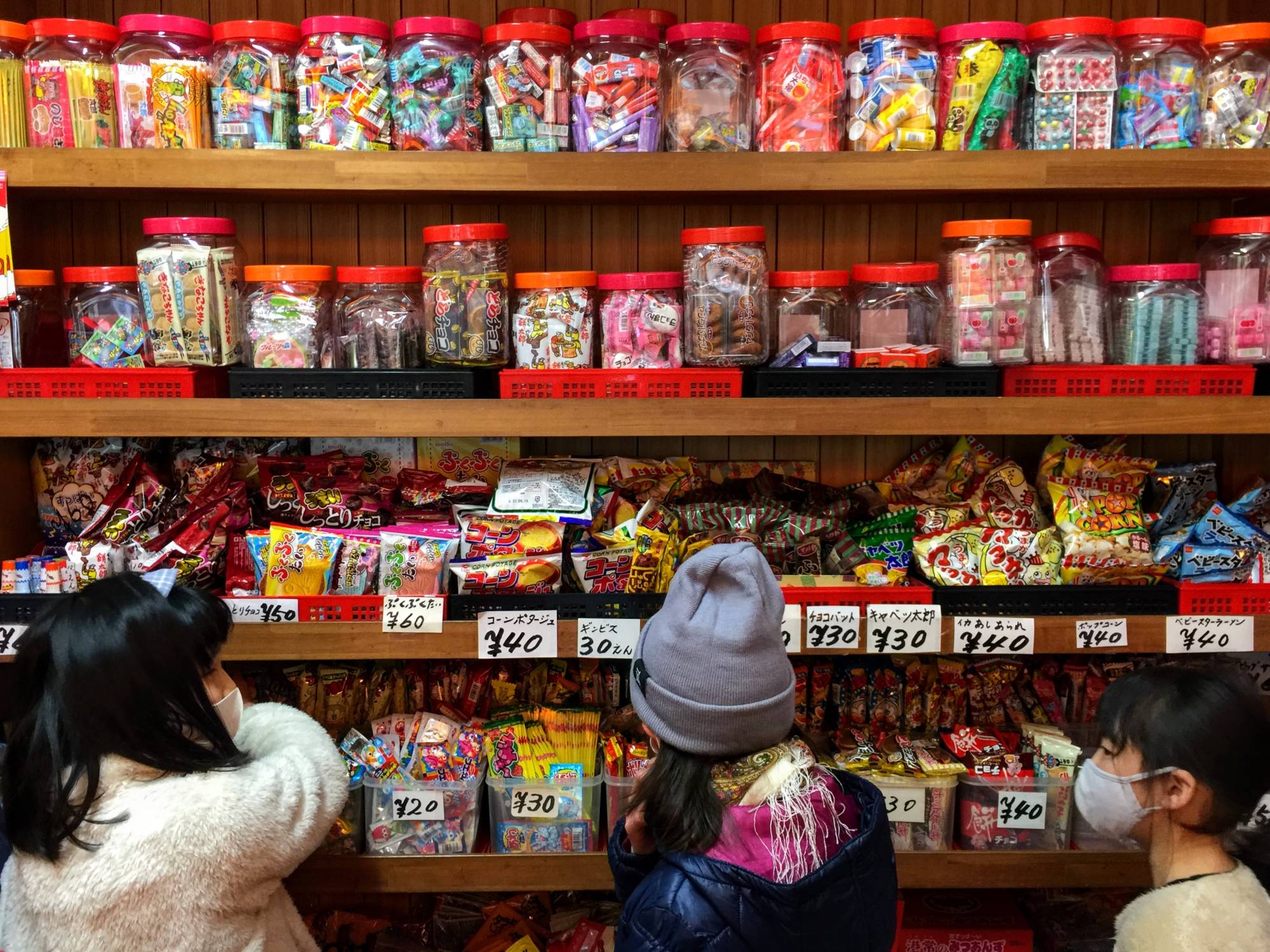Inagaki Kashiten is a child’s dream. Its tiny, wood-paneled room is lined with plastic jars of inexpensive dagashi candy. Kids can bash away at child-sized arcade machines, or pile mini baskets with ¥30-a-pop treats.
Some of the most popular include dried squid, okoshi (puffed rice crackers), mame ita (nut brittles), imo yōkan (sweet potato jellies), caramels, karintō (fried dough), sugar candies in various shapes and even senbei (rice crackers).
Observing this flurry of life, it’s hard to believe dagashiya (candy stores) like Inagaki are in decline: According to government data, the number of dagashiya has declined from 228,123 in 1972 to just 74,304 in 2016. Though comparatively unknown outside of Japan, dagashi are bright, plentiful and inexpensive, and today you can find dagashi in any 100-yen store or konbini (convenience store). That may be part of the problem.



